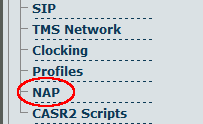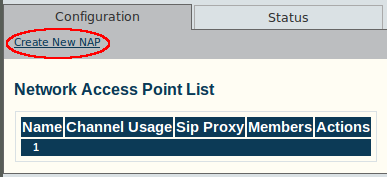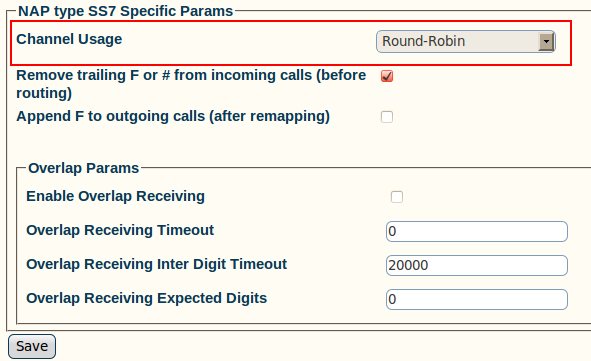Toolpack:Creating a NAP (ISUP) A
From TBwiki
(Difference between revisions)
| Line 1: | Line 1: | ||
| + | Now that you have created an ISUP CIC group, you must create a network access point, in order to finish configuring your system. | ||
A Network Access Point (NAP) represents the entry point to another network or destination peer. | A Network Access Point (NAP) represents the entry point to another network or destination peer. | ||
| Line 27: | Line 28: | ||
5- Associate an ISUP interface with the NAP: | 5- Associate an ISUP interface with the NAP: | ||
| − | * Select an '''interface''' | + | * Select an '''interface''' (the newly-created '''ISUP CIC group''') |
* Click the '''"<<"''' button to add the interface to the list | * Click the '''"<<"''' button to add the interface to the list | ||
Revision as of 13:00, 5 July 2010
Now that you have created an ISUP CIC group, you must create a network access point, in order to finish configuring your system. A Network Access Point (NAP) represents the entry point to another network or destination peer.
To create a network access point (NAP):
1- Click NAP in the navigation panel
2- Click Create New NAP
3- Configure the new NAP:
- Enter a name for the NAP
- Select a user-created profile, if not, select default
- Click Create
4- Verify that the NAP was successfully created message appears
5- Associate an ISUP interface with the NAP:
- Select an interface (the newly-created ISUP CIC group)
- Click the "<<" button to add the interface to the list
The following screen is displayed:
- Select a value for Channel Usage, to avoid call collision
- Click Save
6- Verify that the NAP was successfully updated message appears




